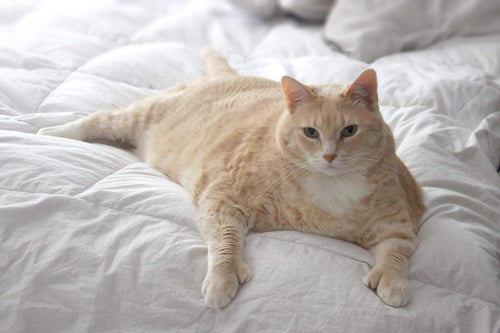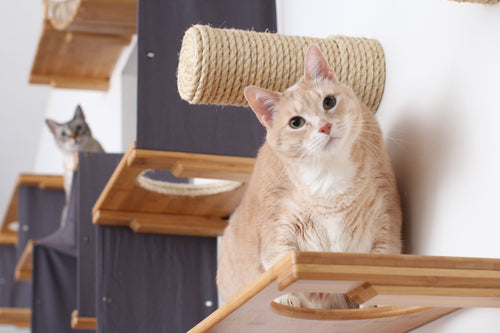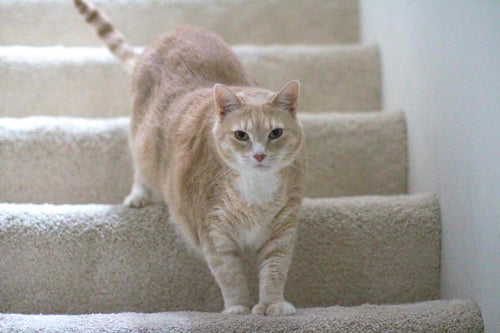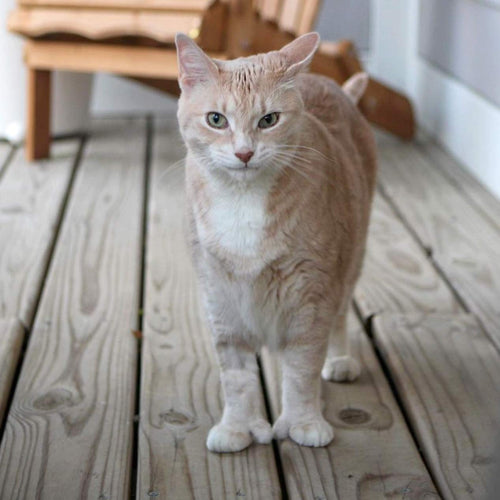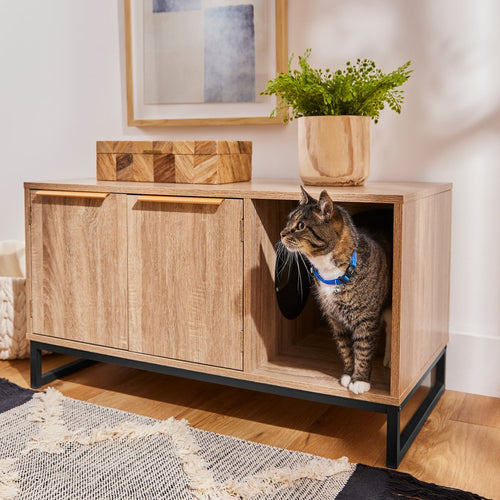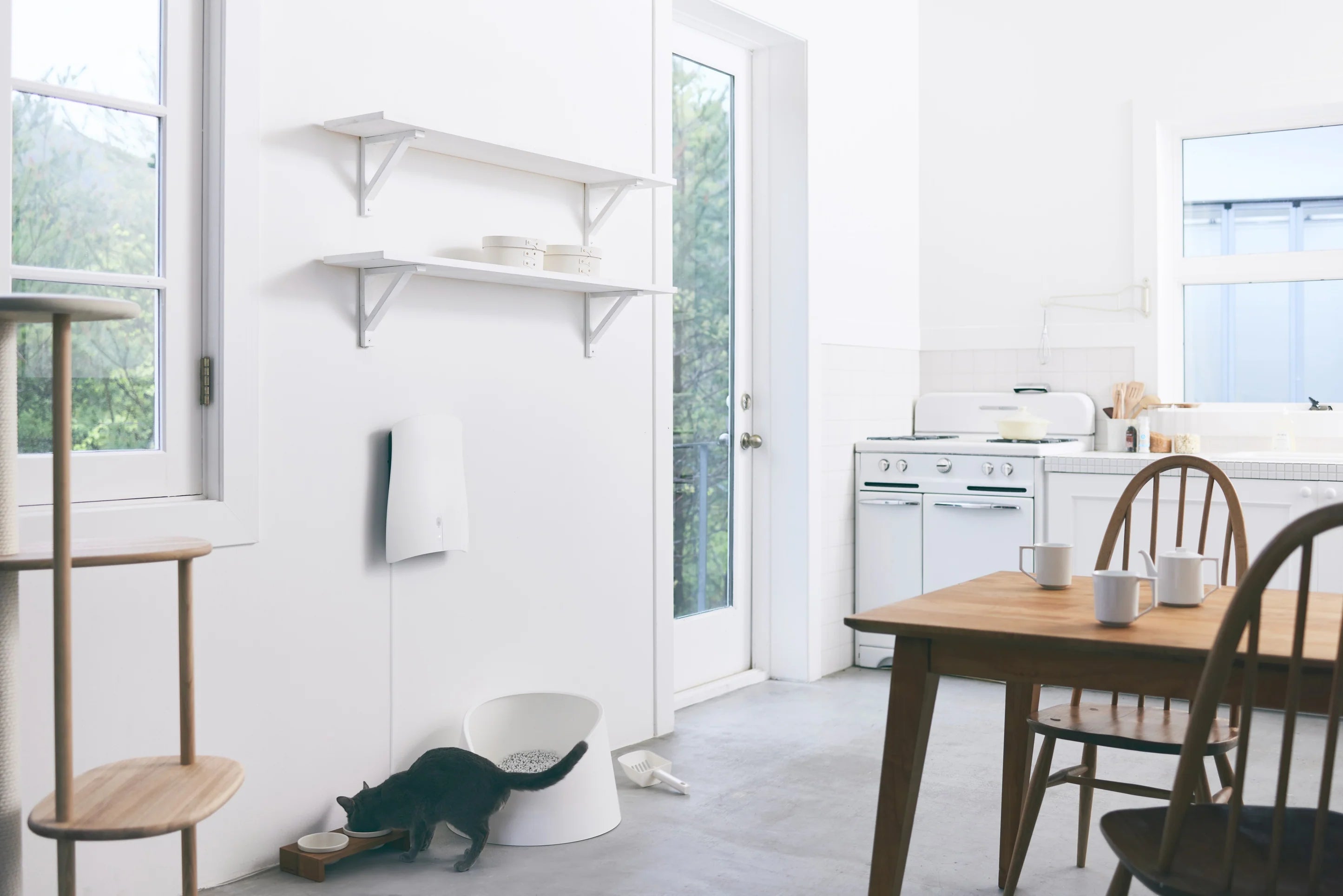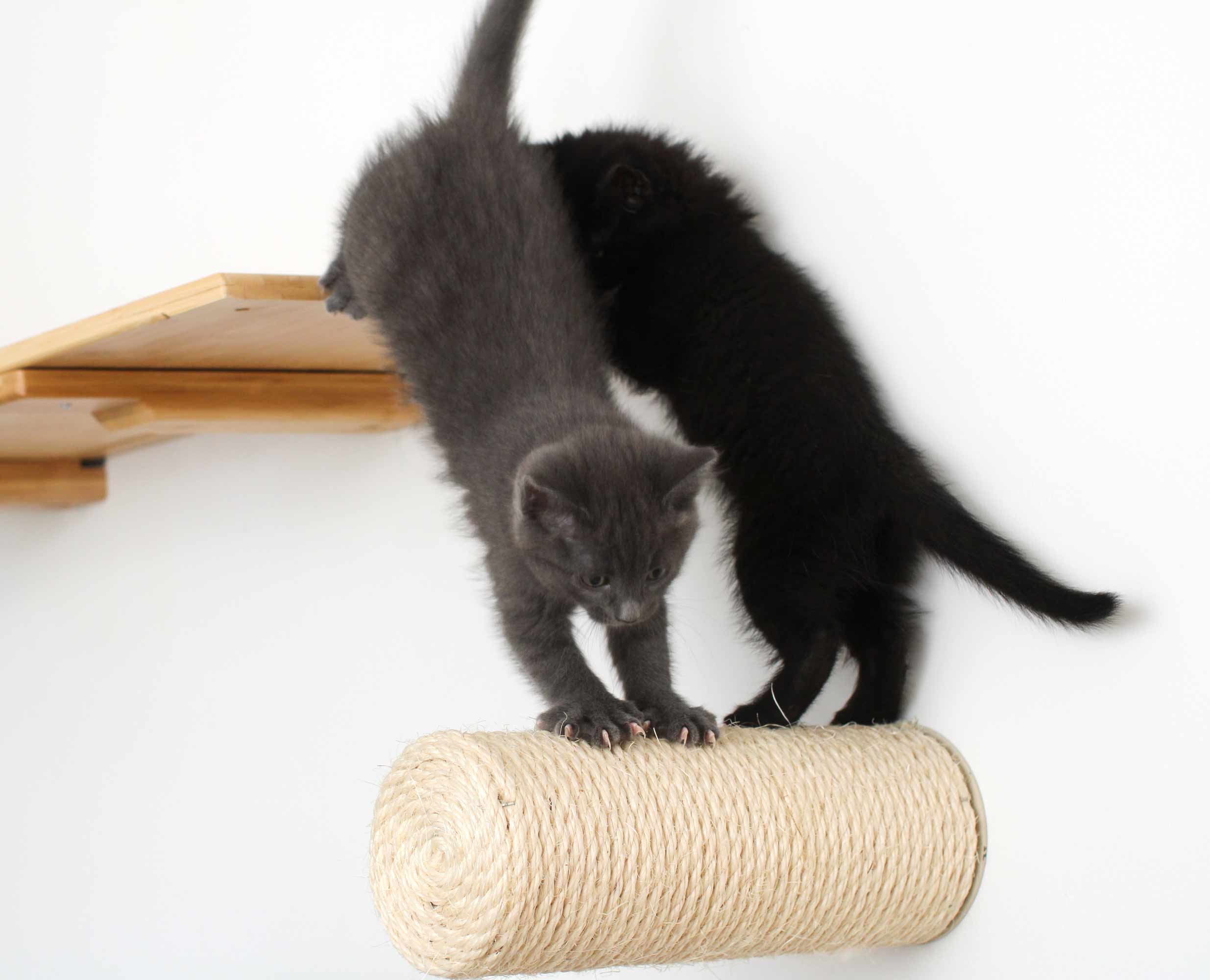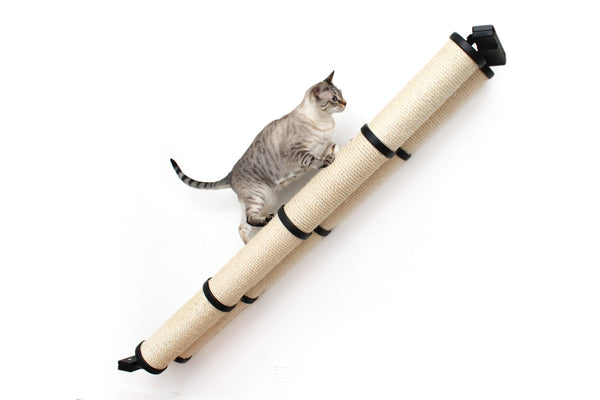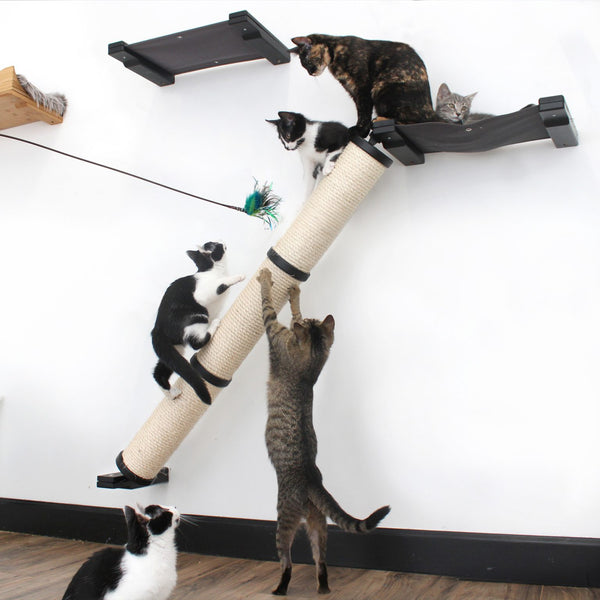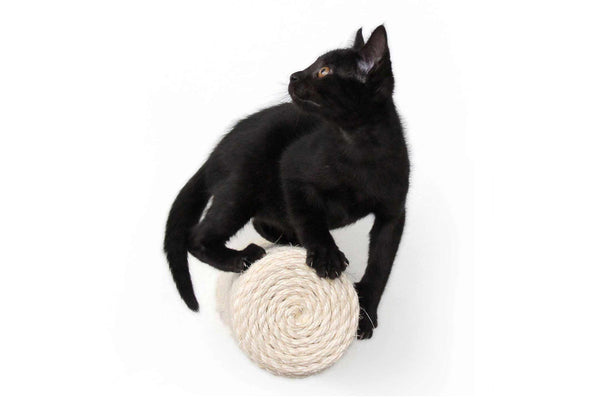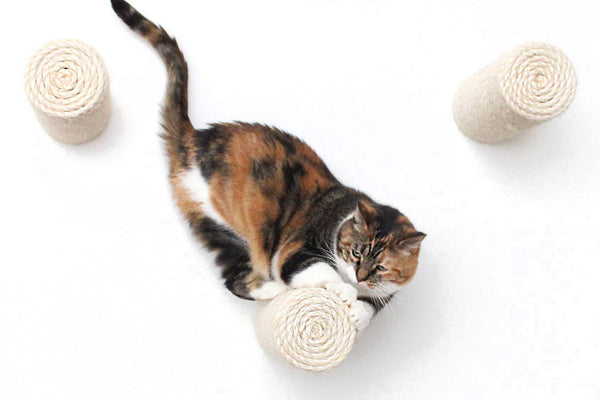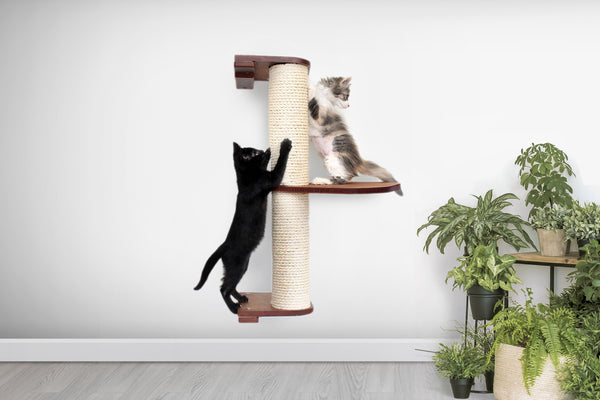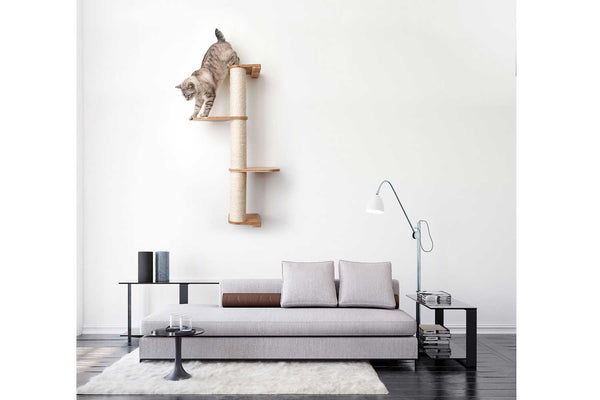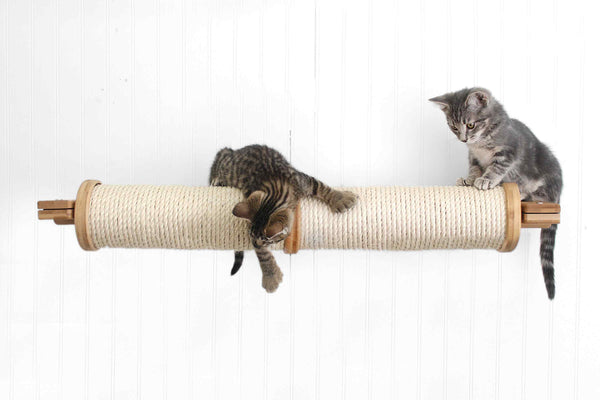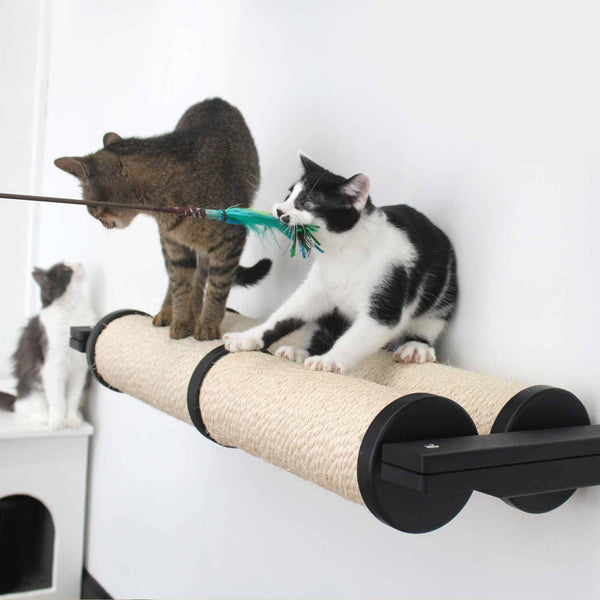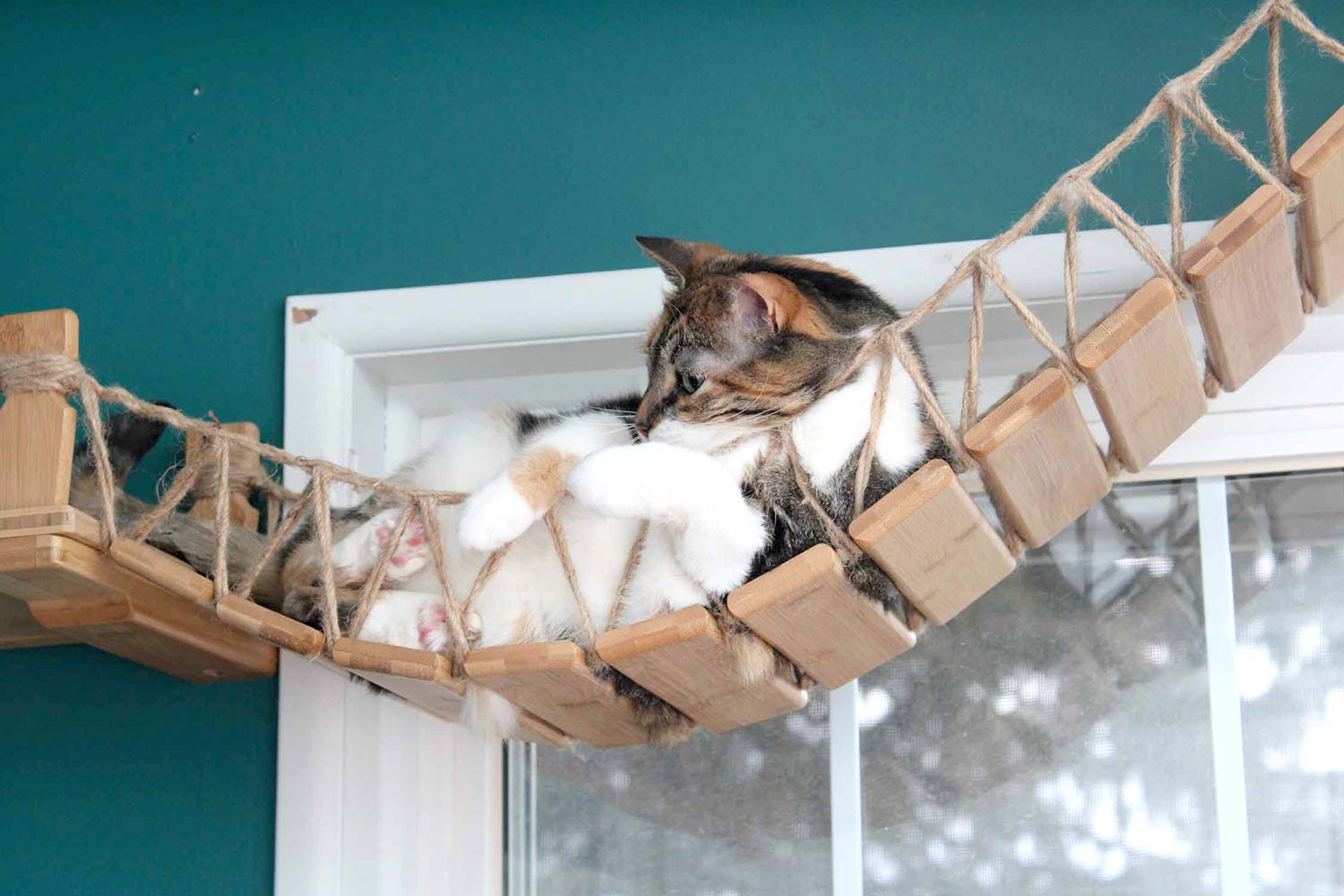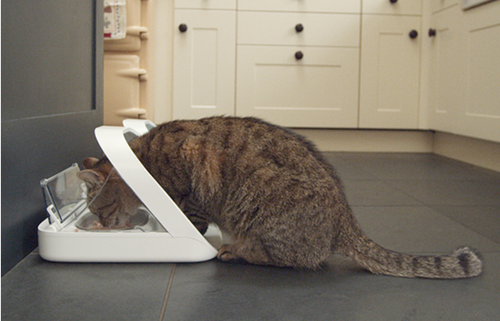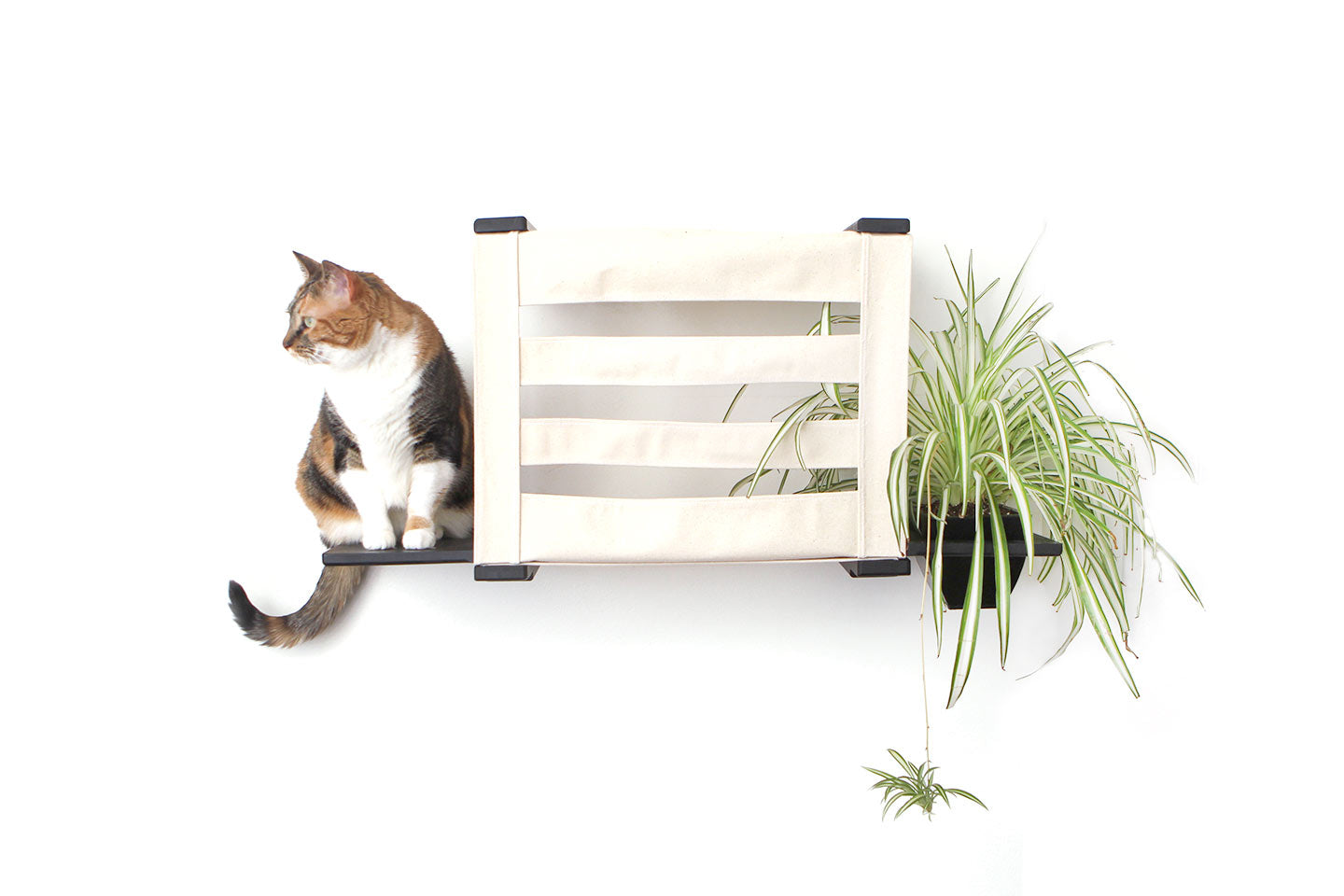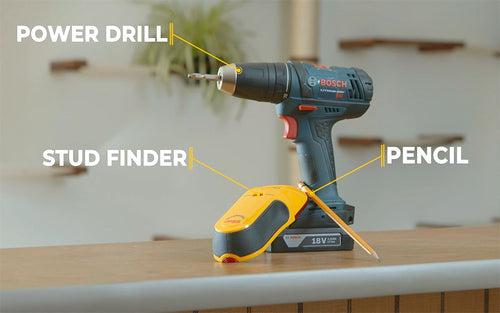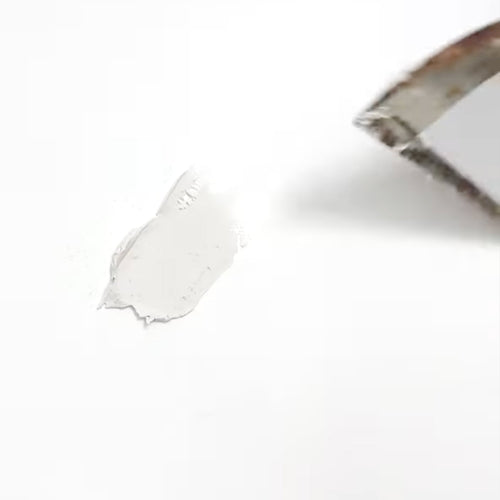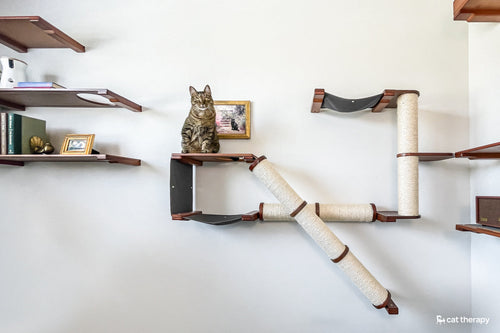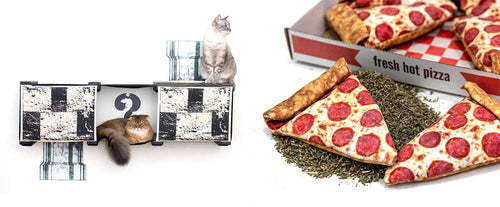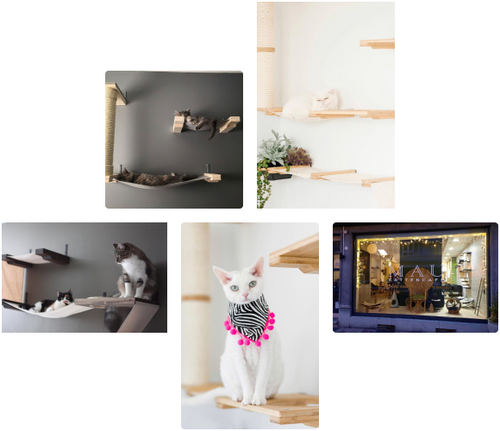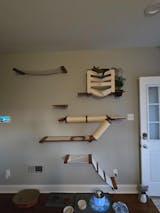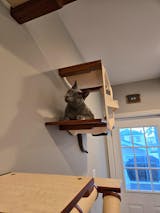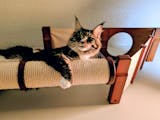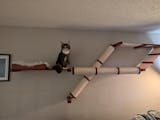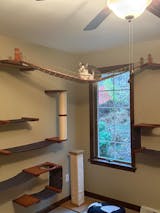The whole experience from working with a design consultant, to placing the order, to hanging the items, to finally watching our cats enjoy their wall has been great. They really love this wall. Not one ounce of regret. In fact, we are going to put up another system near a large picture window. The kitties aren't spoiled at all. ;)
Thank you so much for sharing your positive experience with our Wall Mounted Cat Shelf! We are thrilled to hear that your kitties are enjoying their new wall and that the entire process was enjoyable for you. Thank you for choosing our products! -Elexis
With the help of a design expert from Catastrophic, we created this wall in one of our kitties' favorite spaces, the kitchen. Seymour has always been daring since he was a wee kitten, so he led the charge up the wall. He loves to lay up here when we are cooking to observe all that is going on, as well as to nap. His sister Clarabelle will head up when she wants to snooze and nibble on the palm.
So glad we went with Catastrophic - their system of climbing apparatus look phenomenal and are really high quality.
Hi Heather! Thank you for your wonderful review of our Deluxe Cat Cubby Bed. We are so delighted to hear that your kitties, Seymour and Clarabelle, are enjoying their new bed in their favorite space! It's great to hear that our design expert was able to help create a perfect spot for them to observe and nap. We are also glad that our climbing pole is of high quality and living up to your expectations. We appreciate your support and look forward to serving you and your furry friends in the future. -Elexis
Even before it was completely assembled, our cats were curious and trying to climb on it. They haven't stopped surveying their domain since it was completed.
Excellent build quality, just enough adjustment left between each connection point to account for stud spacing variations, and plenty sturdy. Absolutely recommend!
Hi Zachary,
Thank you for your positive feedback on The Plateau! We're thrilled to hear that your cats are already enjoying their new scratching bed set. It looks great! Our team takes pride in creating high-quality and versatile products for our feline friends. We appreciate your recommendation and hope your cats continue to love their new domain. -Elexis
After doing a lot of research, we chose this company. I bought this corner bridge because I thought it was a cool idea and then tried to tie it into other pieces. The instructions for layout choices are a bit confusing, but we eventually just made it work by figuring it out after playing with it a bit. It was very forgiving and had a lot of choices for attachment with the slotted shelf. I think we will be buying another set to get from another wall to the next. Our cats don’t use it a crazy amount yet, but I’m still getting them used to it. Once they figured it out they have used it multiple times.
Hi Jesse,
Thank you for taking the time to leave a review for our Corner Cat Shelf Bridge. We're thrilled to hear that you find it high quality and versatile. We apologize for any confusion with the layout choices, but we're glad to hear that you were able to make it work and found it forgiving. We hope your cats continue to enjoy the bridge, and please let us know if you have any further questions or concerns. We'd be happy to help you with your next purchase.
Best,
Elexis
The Nest Bed seems to be my cats favorite shelf of all. The little black kitty featured in my pictures sleeps on both bottom shelfs all the time, i even catch the orange one there sometimes. They love this shelf and bed combo. Highly recommend.
Hi Bob! Thank you so much for sharing your cats' love for our Nest Bed. We are thrilled to hear that it has become their favorite shelf. We take pride in creating comfortable and cozy products for our feline friends. We hope they continue to enjoy their new bed and shelf combo. Thanks again for the recommendation! Your set up is looking great! -Elexis
I love the look of the bridges and shelfs on the wall! I got two bridges, one that span 5 studs and one that spans 3 studs. Both cats are scared to go to the top 3 stud bridge. They only go up there if i put treats up there. I think its because of the height, i put it 10 inches down from the ceiling. Great purchase though as its a nice place to feed the cats treats and they LOVE sleeping on the bottom shelf beds
Hi Bob!
Thank you for sharing your experience with our Cat Bridge for Wall. We're glad to hear that you love the look of the bridges and shelves on your wall. It's great to know that your kitties have found a new place to sleep and enjoy treats.
We understand that your cats were initially scared of the top bridge, but we hope they will get used to it soon. We reccomend providing play time or catnip in addition to treats to help them associate positive experiences with the high up items. It's definitely a fun and safe spot for them to explore and play. Thank you for choosing our product and we hope your cats continue to enjoy it. -Elexis


